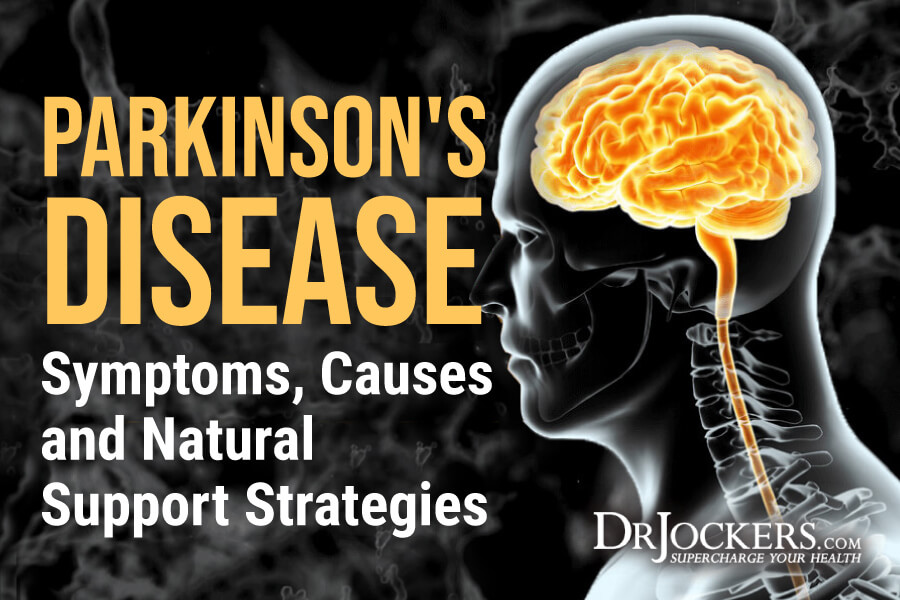
Parkinson’s Disease: Symptoms, Causes and Natural Support Strategies
Parkinson’s disease is the second most common degenerative disorder of the central nervous system after Alzheimer’s disease. It is estimated that 1% of individuals over the age of 65 are diagnosed with this disorder (1, 2). In this article, you will learn the most common symptoms associated with Parkinson’s as well as the root cause issues involved. In addition, I will go over some of my top natural strategies to help improve brain health.
Parkinson’s was once rare disease has seen enormous growth over the last 30 years. In 2005, there were an estimated 4.1 million people worldwide with Parkinson’s disease. In 25 years, that number is predicted to climb to 8.7 million. As a country we spend over 23 billion dollars each year on Parkinson’s treatments
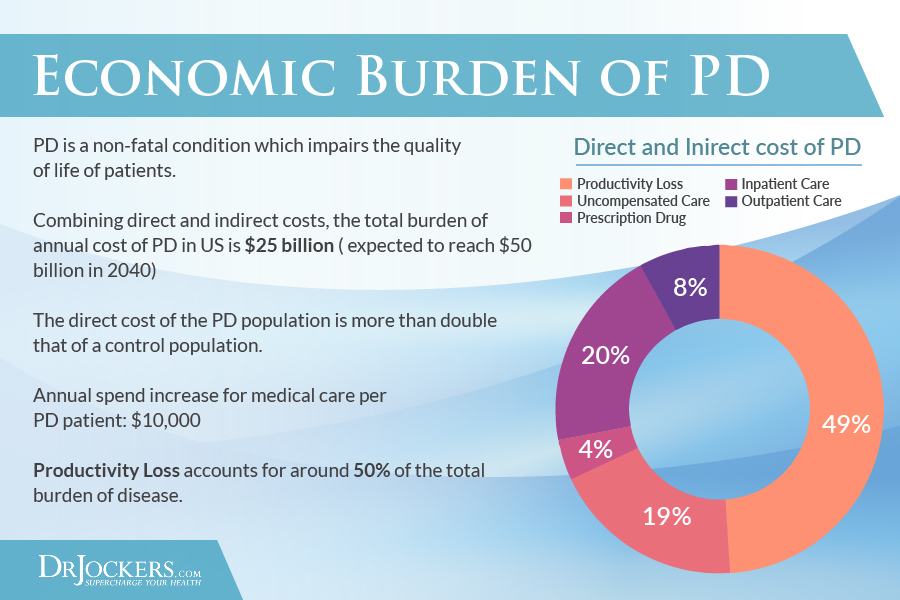
Parkinson’s Symptoms:
The most common symptoms of Parkinson’s include movement related disorders such as shaking, rigidity, difficulty walking and slowness of movement. As the disease progresses it leads to cognitive and behavioral problems such as dementia, insomnia and irritability.
The individuals often have pain and slurred speech. They also take on a stooped posture as their brain atrophy’s. It is an incredible burden for someone watch a loved one go through the progression of Parkinson’s disease. The goal of this article is to help you take back control of your health and your family’s health before it is too late.

The Neuro Degenerative Process:
Parkinson’s particularly affects a region of the basal ganglia called the substantia nigra. The basal ganglia are a group of brain structures that utilize dopamine as their primary neurotransmitter.
Neuronal loss in these regions is associated brain cell inflammation and the formation of cross-linked proteins called Lewy bodies in the remaining nerve cells. Lewy bodies are protein aggregates that form and block normal cellular activity (3, 4).
Type II Diabetes and Parkinson’s Risk
Researchers in Finland have found that individuals with type II diabetes have an 83% greater risk of developing Parkinson’s (5). In the study, researchers followed a group of more than 50,000 men and women in Finland over a period of 18 years. During that time, 324 men and 309 women developed Parkinson’s disease.
Researchers found people who had type II diabetes at the start of the study were much more likely to be later diagnosed with Parkinson’s disease. A later Denmark study confirmed the findings of this Finland study in that individuals with type II diabetes are at a higher risk of Parkinson’s development (6).
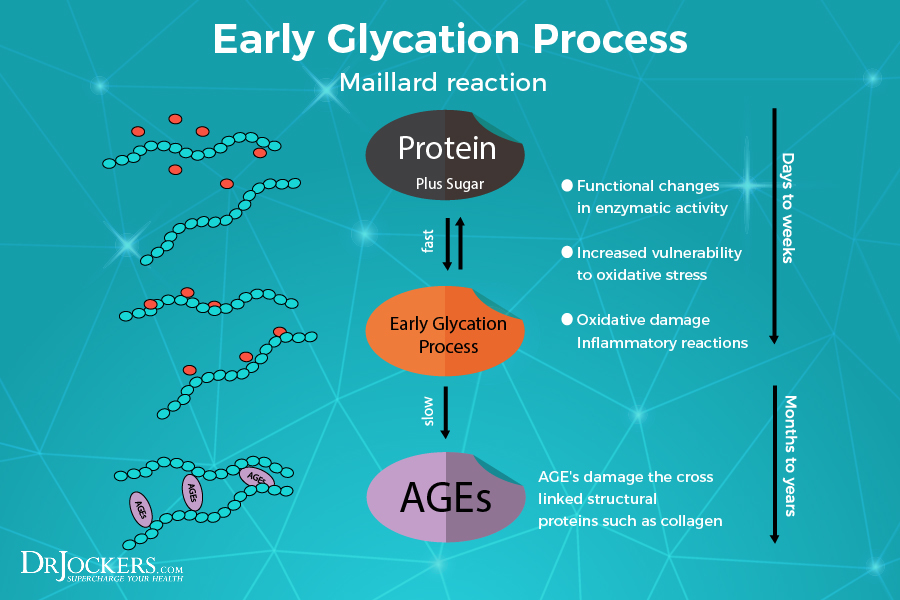
Elevated Blood Sugar and Brain Health:
Elevated blood sugar is known to link with protein structures in a process called glycation. This reaction of reducing sugars connecting to amino acids creates advanced glycolytic enzymes (AGE’s). AGE’s are especially dangerous and create massive amounts of free radicals (7).
AGE damage in the basal ganglia region is associated with Lewy body formation. These structures are created and aggregate in the basal ganglia due to excessive oxidative stress within the sensitive neuronal tissues (8).
Oxidative stress in the brain is most commonly associated with blood sugar imbalances and environmental toxins such as heavy metals and organic toxins like pesticides and herbicides (9, 10).
Pesticides and Parkinson’s Disease:
British studies have linked users of conventional herbicide weed killers and pesticide fly killers to be almost twice as likely to form Parkinson’s disease (11, 12).
Many of these products kill weeds and bugs by affecting protein chemistry within the organism. This seems to clearly have deleterious effects on humans as well. The greatest potential sources of exposure include crop spraying, weed killers, pesticides and insecticides used in the garden and fly sprays and ant powders used in the home. There are many law firms who are now filing Parkinson’s disease lawsuits on behalf of people who have been exposed to these chemicals and are suffering with this disease.
Most people spray these things in their home without even thinking twice. Additionally, these toxic chemicals are often found in non-organic fruits and vegetables. It is key to minimize your exposure to these chemicals.
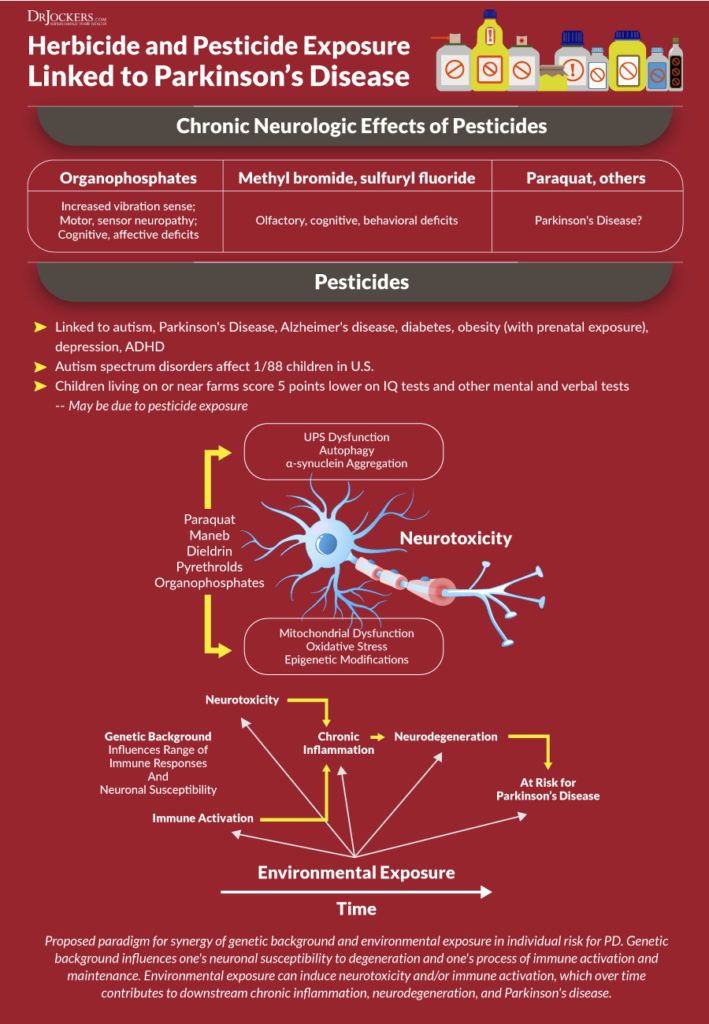
BioToxic Illness and Parkinson’s
Biotoxins are hazardous organic substances that can cause significant damage to your health. Examples of biotoxins include mold and fungi, bacteria, volatile organic compounds (VOCs), endotoxins and actinomycetes.
Most people are exposed to biotoxins through living in water damaged buildings. Certain mold toxins have been linked as causes of Parkinson’s like symptoms (13). Other ways to come into contact with biotoxins include ingesting contaminated food or water, inhaling airborne biotoxins, and tick or spider bites. There are reports of Lyme-associated Parkinson’s from tick bites carrying the B burgdorferi infection and how it can impact the central nervous system and create Parkinson’s onset (14).
There is even research done on what is called the “Hibernating Spore Hypothesis” about bacteria and fungal toxins provoking the brain inflammation that causes Parkinson’s (15).
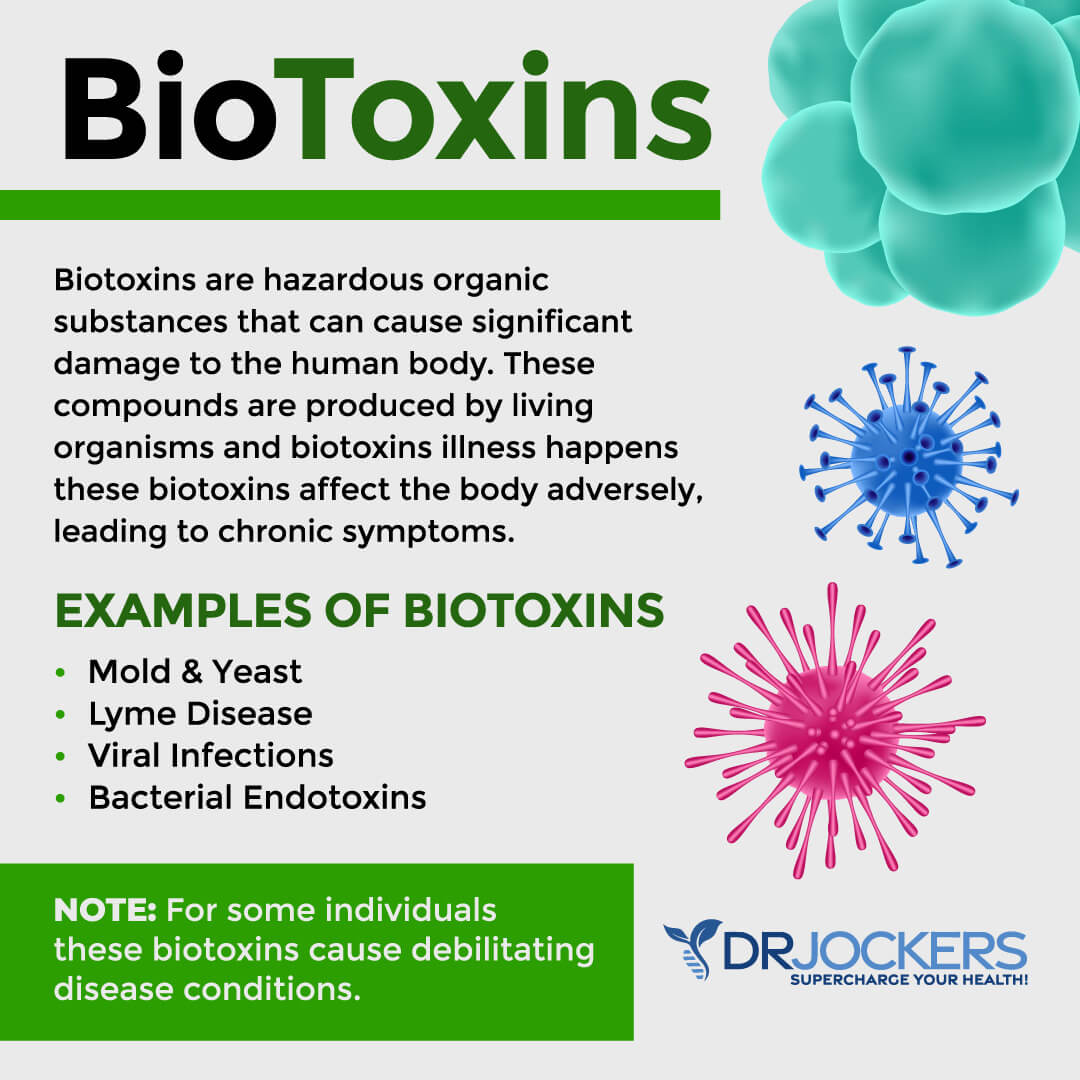
Mitochondrial Dysfunction:
Every cell of the body has mitochondria within it that produce energy for the cell. The mitochondria are the battery packs of the cell, and they are extremely important. High levels of oxidative stress wear down the mitochondria and cause a dysfunctional state. Studies have found that individuals with Parkinson’s disease have an advanced state of mitochondrial dysfunction (16, 17, 18).
Individuals suffering from Parkinson’s are evidenced to have massive cell death of the dopamine producing cells in key areas of the basal ganglia such as the substantia nigra. Research has shown that this is initiated by a profound glutathione (GSH) decrease and a mitochondrial dysfunction.
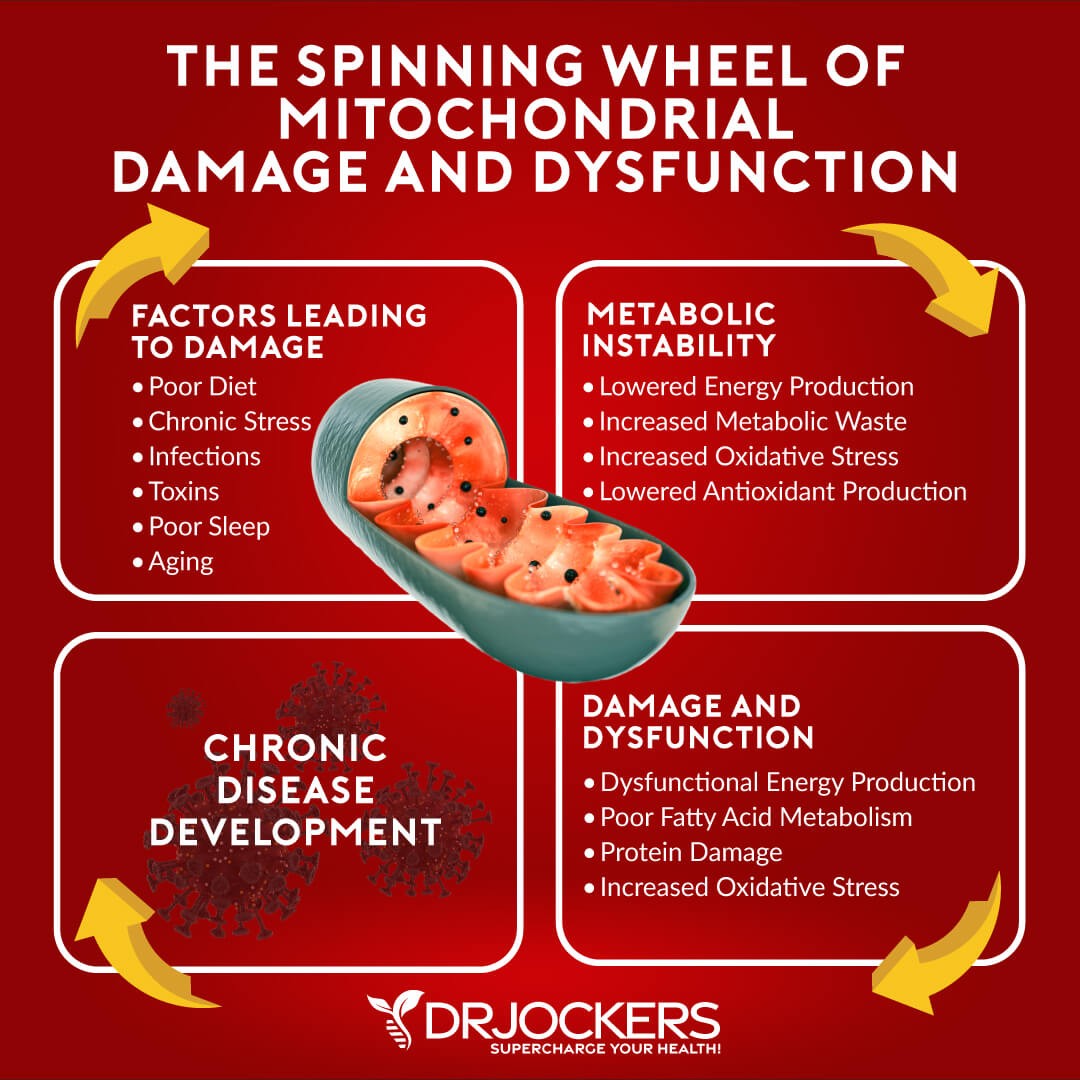
Glutathione Depletion and Nrf2:
Basically, the cells are under so much stress that their main protective shield (GSH) gets worn down and oxidative stress damages the mitochondria and the DNA leading to cell death. Poor blood sugar control and high environmental toxin exposure are known to deplete glutathione levels and impair mitochondrial function (19).
A key pathway that maintains cellular glutathione levels and the ability of the cell to adapt to stress is called Keap1-Nrf2. When this pathway breaks down it causes increased levels of oxidative stress within the cell that leads to the glutathione depletion and mitochondrial dysfunction (20).
This pathway must be addressed in order to prevent or reverse Parkinson’s symptoms (21).
Anti-Inflammatory Nutrition Plan:
The key to preventing and reversing Parkinson’s disease is to begin with an anti-inflammatory diet and lifestyle. This includes lots of clean water and phytonutrient rich raw and lightly cooked vegetables.
Good fats such as avocados, olive oil, nuts/seeds and coconut products should be strongly encouraged. Healthy animal products such as grass-fed beef, bison, lamb, antelope, deer and free-range chicken, turkey and eggs should be used generously.

Reduce Sugar and Maximize Nutrients:
Sugar and food sources that metabolize into sugar such as grains and fruits should be used minimally. Anti-inflammatory herbs such as turmeric, ginger, cinnamon, garlic, and rosemary among others should be used at every possible chance.
High quality omega-3 fatty acids are especially important for stabilizing neuronal cell membranes. Research has indicated that low omega 3 status causes accelerated neurodegeneration in the substantia nigra and increases the risk of Parkinson’s development (22, 23). Eating grass-fed meats and wild caught seafood such as salmon, sardines and oysters provide a lot of omega 3 fatty acids, zinc and other key nutrients.
Vitamin D has also been shown to reduce the risk of Parkinson’s development (24). Other research has shown that vitamin B6 deficiency plays a role in Parkinson’s development (25).
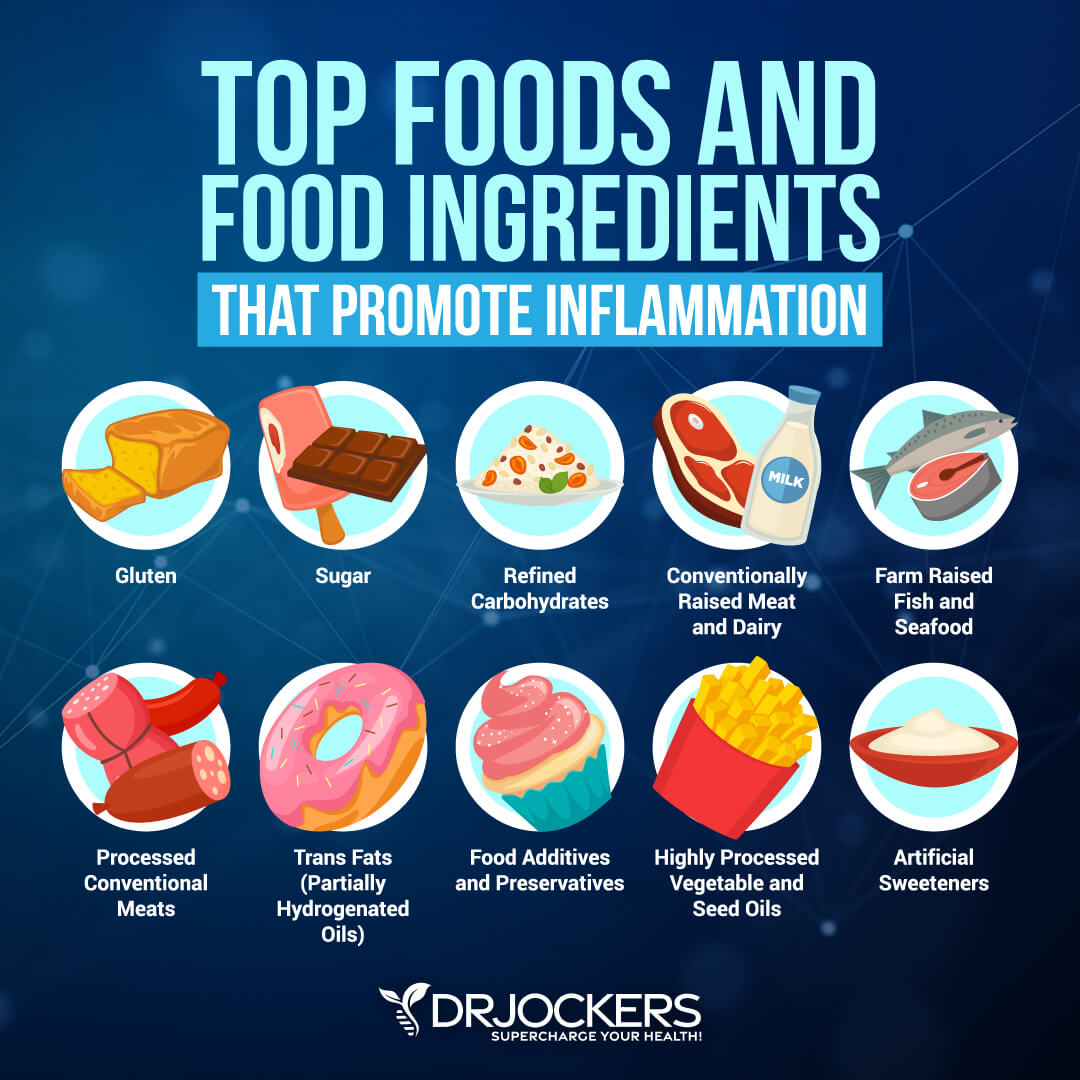
Boost Intracellular Antioxidants:
It is very important for individuals who are suffering from Parkinson’s or are susceptible to the disease to boost intracellular glutathione levels. Glutathione (GSH) is a very special peptide molecule that provides the greatest antioxidant protection and recharges other antioxidants within the body (26, 27).
Glutathione helps the cells eliminate wastes from the intracellular environment and into the bloodstream. In order to prevent retoxification it is essential to use a binding agent such as activated charcoal, zeolites or bioactive carbons.
Research has found that activated charcoal is a very effective way to remove pesticide and herbicide chemicals and other organic toxins from the body (28).
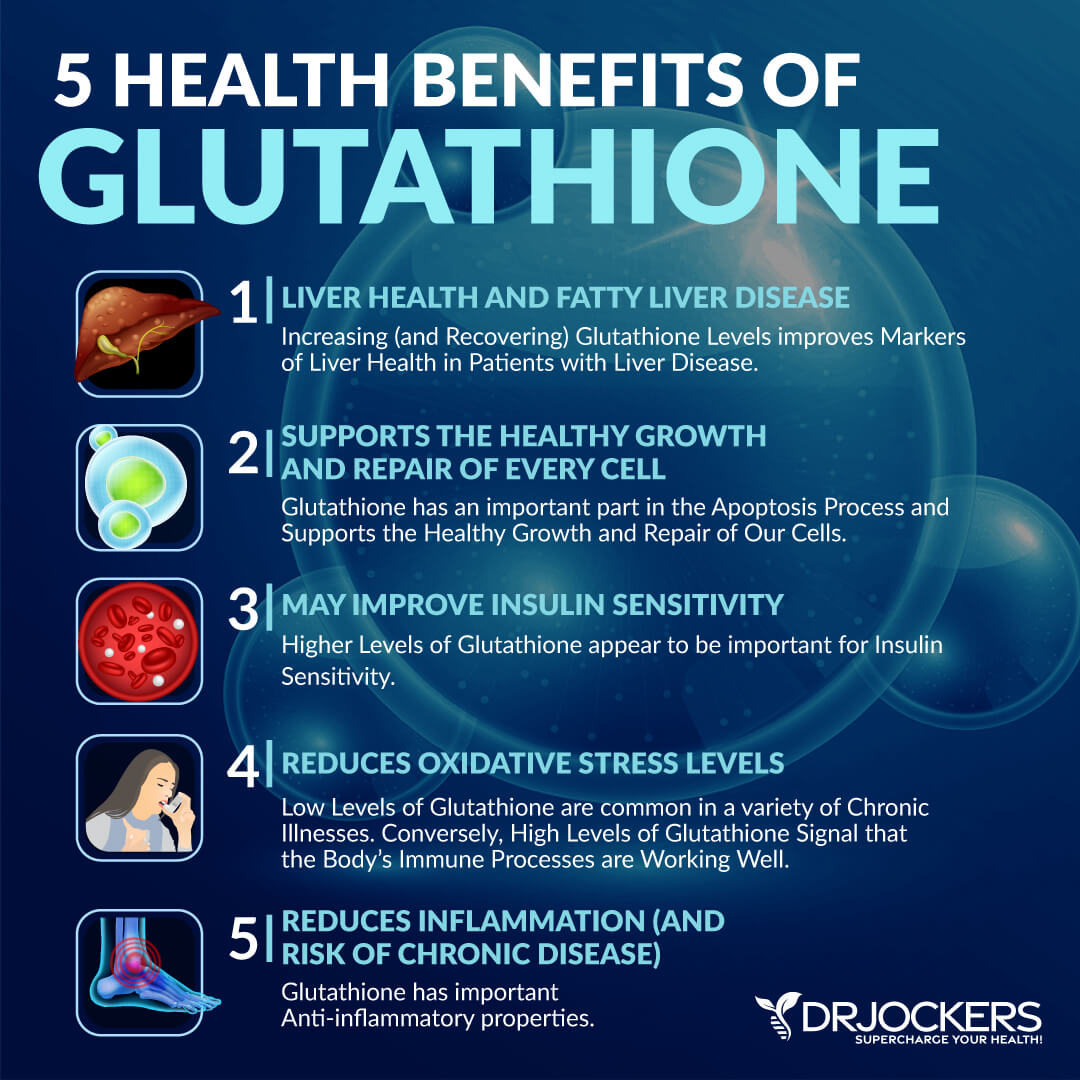
L-Dopa and Neurotransmitter Problems:
L-dopa is the most commonly prescribed medication to treat Parkinson’s disease. Individuals with Parkinson’s have low dopamine production in the substantia nigra. L-dopa is a synthetic form of dopamine. It often gives some symptomatic benefits for a short period of time; however, it never addresses the underlying oxidative stress in the brain and the individual never truly gets better.
Unfortunately, L-dopa depletes the body of key nutrients that are precursors to major neurotransmitters in the brain. This includes L-tryptophan, L-tyrosine, serotonin and sulfur compounds which are needed to produce glutathione (29, 30, 31, 32). This causes further neurological problems and is responsible for many of the mood disorders that are common side effects of L-dopa medication usage.
Additionally, nausea is a very common side effect of L-dopa. Carbidopa is often prescribed to help with the nausea. This medication depletes vitamin B6 which is commonly low in Parkinson’s patients to begin with. The medications prescribed only cause a long-term worsening of the Parkinson’s disease process (33).
Natural Support Strategies for Brain Health
Here are the best action steps to get started with on your journey to improve brain health. It is important to note that these strategies are not at this time FDA approved to prevent, mitigate, treat or cure Parkinson’s and should not be confused as such. You should always consult with your physician before stopping or changing medications or taking on new health strategies.
Additionally, you should be working with a functional health practitioner to help guide you through these strategies. This is not an exhaustive list and there are other natural therapeutic strategies that I and functional health practitioners will utilize to help individuals with Parkinson’s.
Change Your Diet:
Eating an anti-inflammatory diet rich in nutrient-dense foods is the first best thing you can do to prevent brain degeneration and improve your brain health. First, eliminate all inflammatory foods, including refined sugar, gluten, refined oils, deep-fried and processed foods, conventional dairy, grain-fed meat and eggs, soda and sugary drinks, and foods that you are sensitive to.
Instead, I recommend eating an anti-inflammatory diet and loading up on greens, vegetables, low glycemic index fruits, herbs, spices, healthy fats, grass-fed meat, and wild-caught fish. I also recommend a ketogenic approach for individuals with neurodegenerative conditions.
Getting into ketosis will enhance mitochondrial function in the brain. Learn more about following a ketogenic nutrition plan here and avoid exposure to herbicides and pesticides by choosing organic food as much as possible.
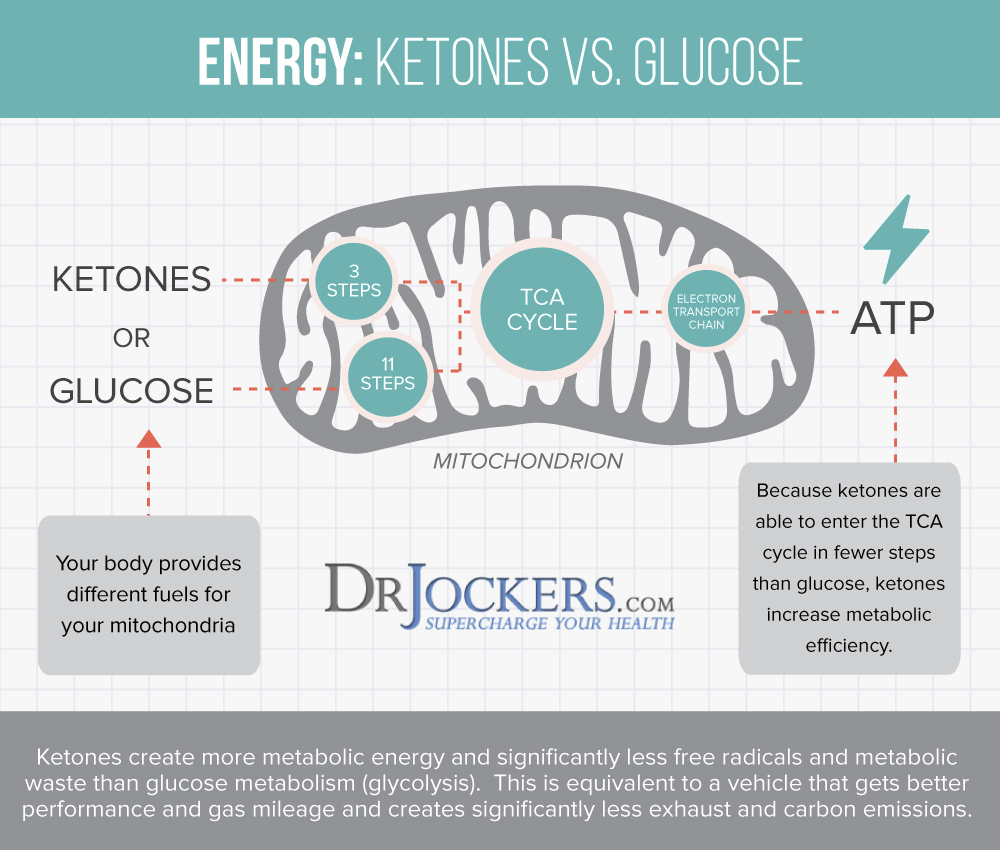
Reduce Stress:
Reducing stress is a critical for reducing inflammation and improving brain health. I recommend that you reduce stressors from your life as much as possible. Turn off the news, and only look at it once a day or a few times a week for a specific period. Reduce your social media use and time on the internet.
Avoid people and situations that bring you down. Surround yourself with loving and uplifting people. Engage in uplifting and relaxation-promoting activities. Read, try some arts and crafts, play cards or board games, sing, and dance.
Spend time in nature and do some grounding walking barefoot on grass. Practice daily gratitude and try positive affirmations. Practice self-love and laugh with friends and family. Meditate, pray, journal, and try daily breathwork. Be grateful and smile more.
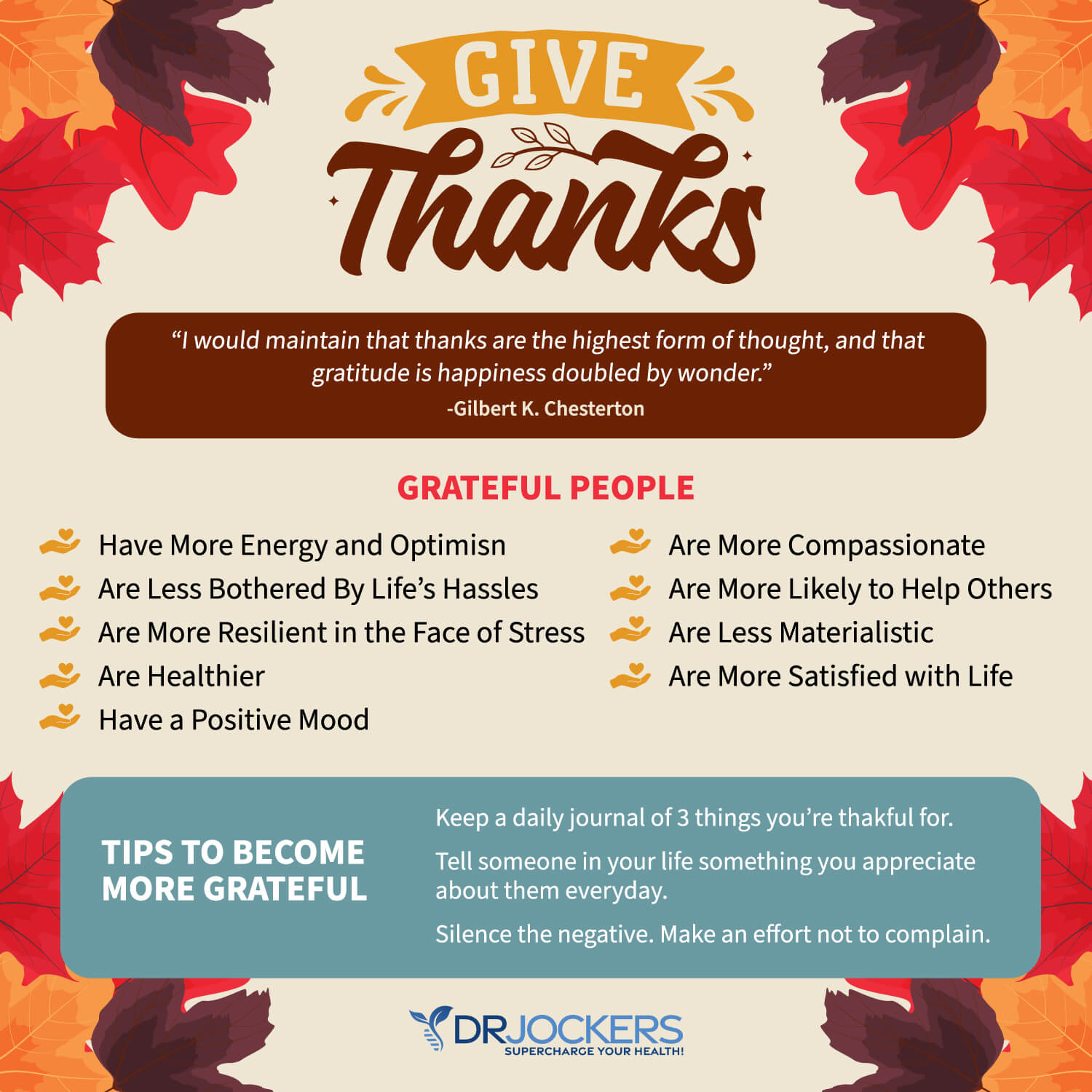
Improve Your Sleep:
Prioritizing good sleep is just as important as reducing your stress levels. Develop a regular schedule going to bed and getting up at the same time every day to support your circadian rhythms.
Avoid electronics, sugar, caffeine, heavy foods, and stress close to the bed. Engage in relaxing activities, including stretching, relaxing baths, meditation, and prayer. Make sure that you have a supporting bed, pillow, and bedding, and sleep in a dark calming room.

Reduce Toxin Exposure
Reducing your toxic exposure is critical for protecting your health from leaky brain. Buy organic food as much as possible. Stop using conventional beauty, body, and household products, and replace them with organic, natural, or homemade alternatives.
Use glass, stainless steel, wood, and bamboo products instead of plastic. Spend time in nature and breathe in the fresh air. Use a good indoor air filtration system. Make sure that you drink clean, toxin-free water by using a high-quality reverse osmosis system.
I recommend systems like Aquatrue or the Berkey system for low-cost filtration. The best water is the UltraLux Triple Action Hydrogen Water Machine which is what I use at home as it is powered by molecular hydrogen which reduces oxidative stress in the body and improves immune function. Add a slice of lime for some extra flavor.

Support Detoxification Pathways
It is not enough to put good things into your body, you have to make sure that the bad things come out as well. Drink plenty of water to support detoxification through sweating and urine. Support your detoxification pathways to protect your body from brain inflammation.
I recommend using infrared saunas to promote detoxification through sweating. Try rebounding and dry skin brushing to support your lymphatic pathways. Support two major detoxifying organs, your kidneys and liver with herbs like milk thistle, parsley, dandelion and bioactive carbons which can penetrate and remove toxins from deep within the tissues and cells.
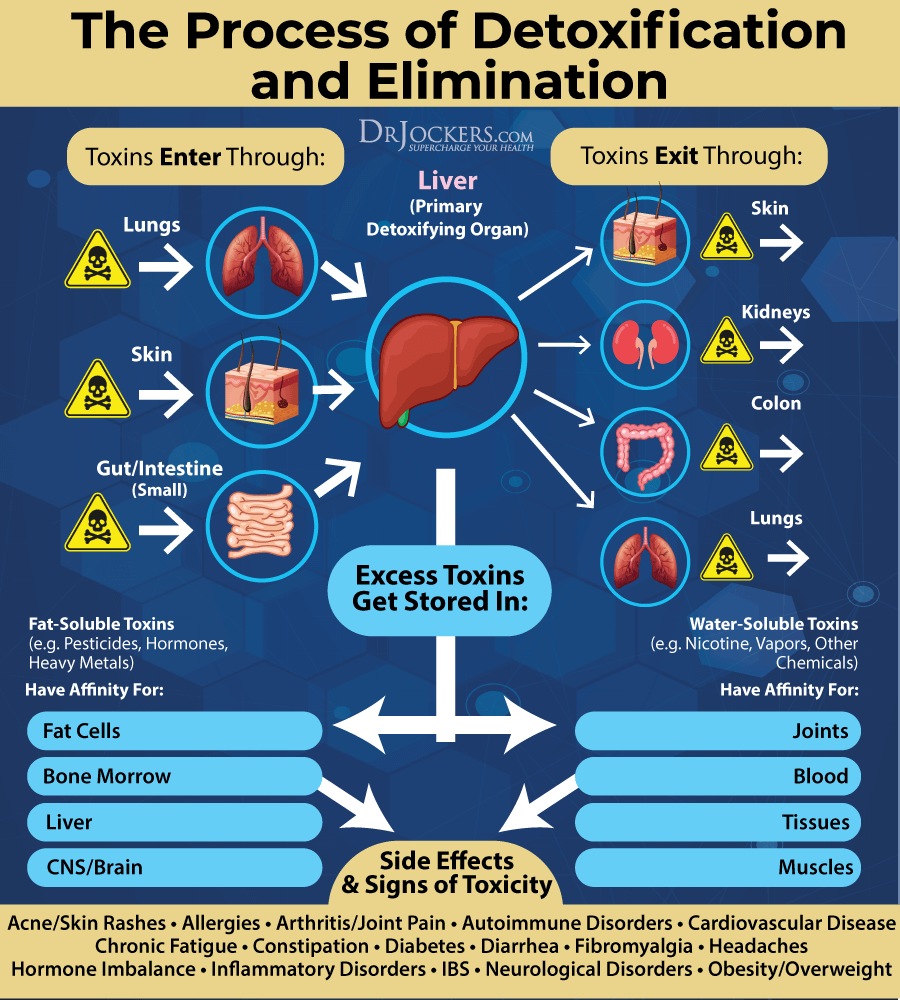
Power Up Your Nrf2 Pathway:
Nrf2 (NF-E2-related factor 2) is a transcription factor in humans encoded by a specific gene that regulates the expression of a set of antioxidant and detoxifying genes. This pathway is activated under times of oxidative stress to enhance the expression of a multitude of antioxidant and phase II liver detoxification enzymes that restore homeostasis to the ox/redox cycles in the body (34, 35, 36).
The Nrf2 pathway has been researched to be a key player in the development or prevention of neurodegeneration (37, 38, 39) Adding in clinical dosages of resveratrol, curcumin, quercetin, sulfuraphane and Green tea (EGCG) can be extraordinarily beneficial for driving up the Nrf2 Pathway.
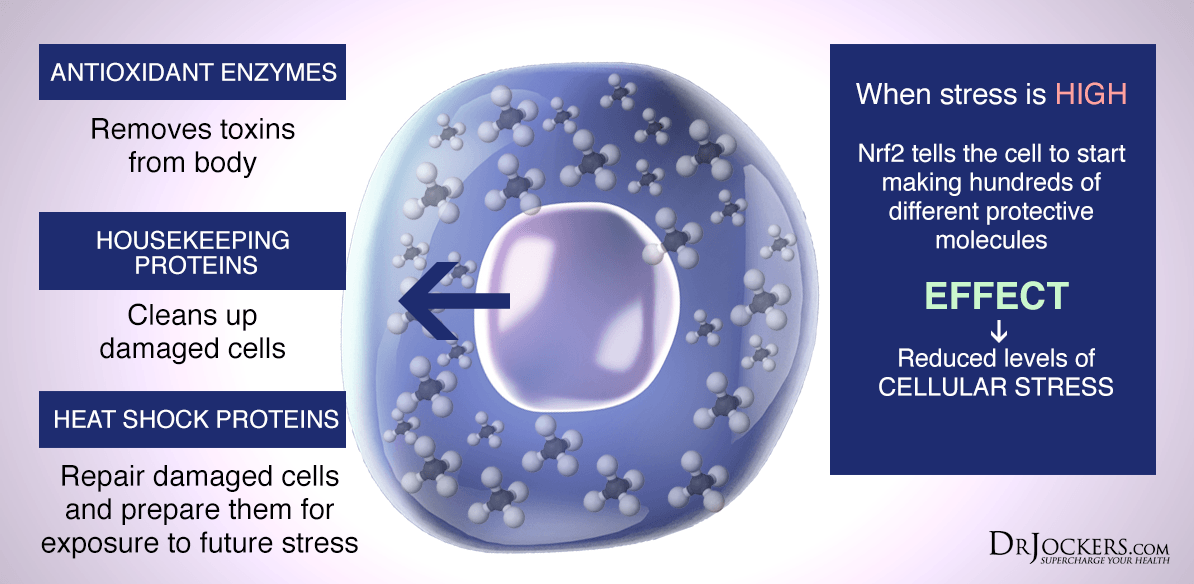
Include Magnesium & B Vitamin Rich Foods:
Magnesium helps to improve blood sugar signaling patterns and protects the blood-brain barrier. The best magnesium and B vitamin rich foods include dark green leafy veggies, avocados, grass-fed animal products, raw cacao and pumpkin seeds.
You can also do Epsom salt baths to support your magnesium levels. It would also be wise to supplement with a good magnesium and B complex supplement. Look for magnesium L-threonate which is the best form of magnesium for crossing the blood brain barrier.
When it comes to B vitamins, it is best to look for one with pre-activated forms such as methyl-folate, methyl-cobalamin (B12), Pyridoxal-5-Phosphate form of B6, and Riboflavin-5-phosphate form of vitamin B2. The methyl groups are in the active form and will be better utilized by the body.

Focus on Deep Breathing:
Improving your posture, seeing a high-quality chiropractor and optimizing your breathing patterns is highly recommended. Taking time to slow down your breathing and take long-deep breaths for a few minutes every hour will help reduce the sympathetic, fight or flight part of the nervous system.
The better we breathe, the better we will heal and the more blood flow we will get into our brain. Follow these tips here to improve your breathing patterns.

Use Antioxidant Rich Herbs:
Carminatives are herbs that help to improve digestive health by reducing pathogens in the gut, stimulating the production of stomach acid, bile and pancreatic enzymes and modulating the gut microbiome.
Examples of these herbs include turmeric, ginger, oregano, garlic, basil, thyme and rosemary. These herbs help to improve digestion, reduce inflammation and support a healthy brain. There are a number of ways to use these that I discuss in the following image. I like putting the herbs on foods, using herbal teas, fermented foods and essential oils.
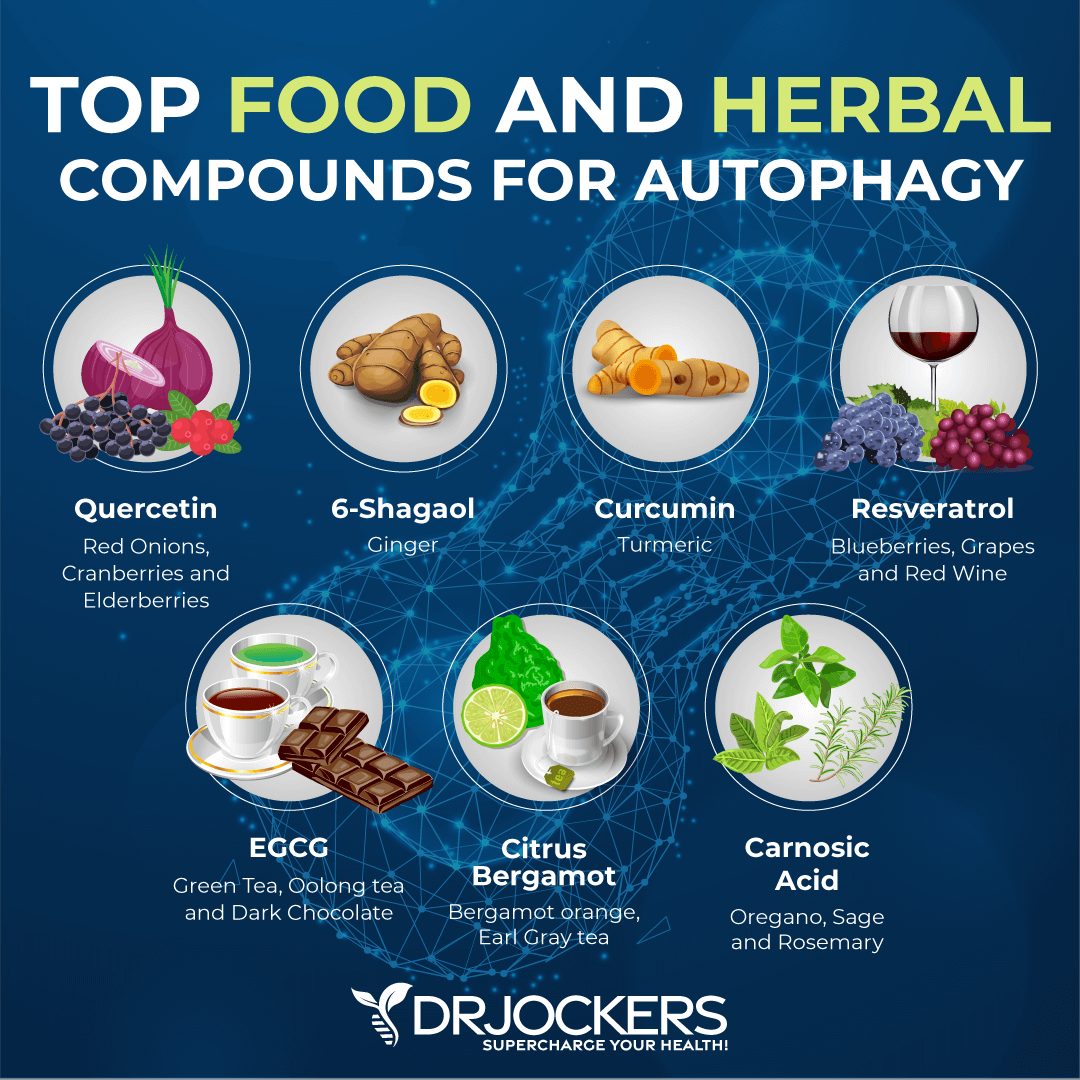
Ground Your Body:
In our society we are surrounded by toxic electromagnetic frequency’s (EMF’s). These EMF’s increase stress within our body and alter neurotransmitter function.
By going outside daily and walking barefoot on grass, dirt or sand you absorb natural EMFs from the ground that balance your electrical rhythms. Follow the steps in this article here.

Supplement With Omega 3’s:
Omega 3 fatty acids and in particular the long chain variety EPA and DHA are critical for stabilizing blood sugar, improving neurogenesis and neurotransmitter production. Consume grass-fed meat, grass-fed butter, wild-caught fish and spirulina to get it in your diet.
Plant based omega 3’s such as flax oil only contain the small chain omega 3 called ALA and do not have any DHA. It is very hard for our body to convert ALA into DHA, so it is best to get a high-quality fish or krill oil that is rich in EPA and DHA. You want to find a brand that is molecularly distilled to take out any heavy metals and other unwanted contaminants.
Be sure to discuss with your physician before using as fish oils have a blood thinning affect and can be contraindicated if you are on blood thinning medications.
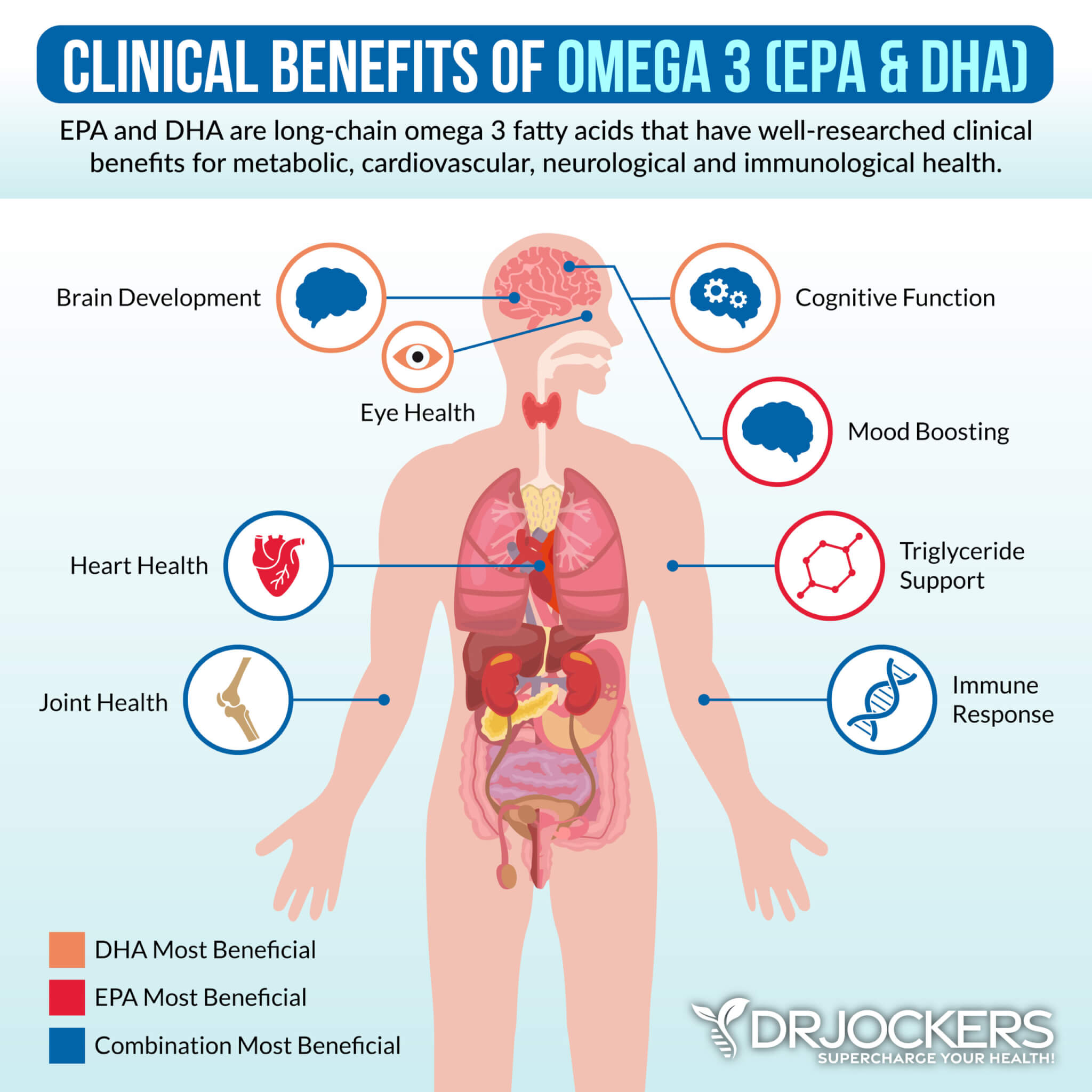
Improve Your Mitochondria:
The mitochondria are the energy powerhouses of every cell. When someone has a neurodegenerative disorder, it is a clinical sign that they have dysfunctional activity going on in the mitochondria.
Support your mitochondria with clinical doses of CoQ10, L-carnitine, N-acetyl cysteine, creatine monohydrate, B vitamins, magnesium, alpha lipoic acid and D-ribose. You can find mitochondrial support supplements that have most if not all of these key nutrients.
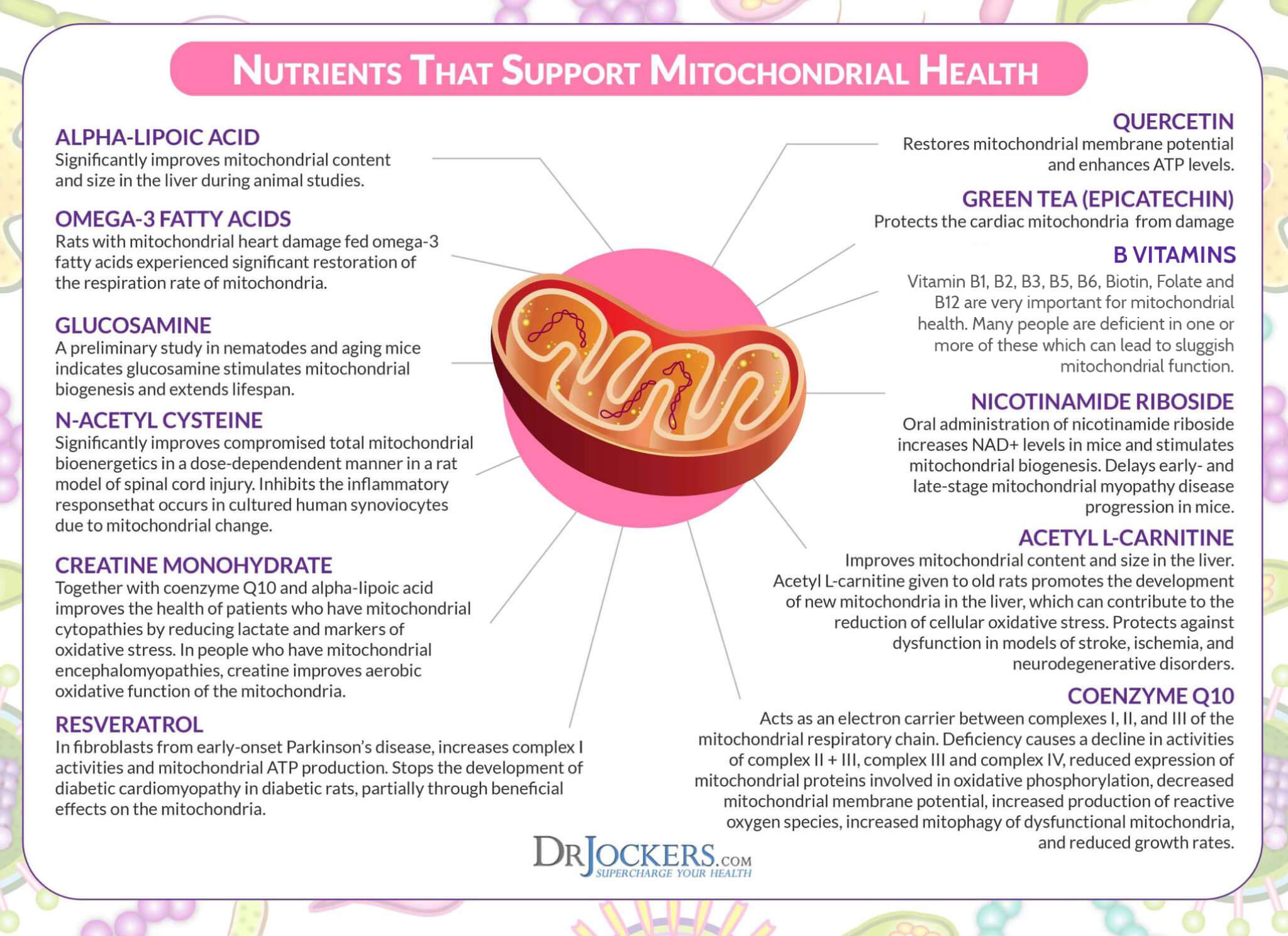
Intermittent Fasting:
Intermittent fasting is a form of fasting cycles between not eating (fasting) and eating (feasting) over a period of time. The benefits of intermittent fasting benefits include cellular repair, autophagy, immune regulation, inflammation levels, and insulin sensitivity.
It also helps to lower the risk of chronic diseases, including neurodegenerative conditions, such as Parkinson’s and dementia. Going 16–18 hours between dinner and breakfast is one of the best ways to improve mitochondrial production. Your body improves energy efficiency by increasing and strengthening the mitochondria during periods of fasting. Consume your meals in a 6–8-hour window such as 11am–7pm or 12–6pm.
When you do this, you enhance cellular healing and brain cell regeneration. One molecule that fasting increases is BDNF which enhances the growth and development of brain cells. To learn more about the benefits of intermittent fasting and best intermittent fasting practices, I recommend this article.

Optimize Your Vitamin D:
Low vitamin D3 is associated with neurological inflammation and neurodegenerative conditions. There are vitamin D receptors throughout the central nervous system and critical regions of the brain including the hippocampus.
Researchers have concluded that vitamin D activates and deactivates enzymes in the brain and cerebrospinal fluid that are involved in nerve growth, synaptic density and neurotransmitter synthesis (40).
Vitamin D3 is also shown to boost glutathione production in the neuronal cells protecting them from damage inflicted by oxidative stress. Vitamin D also helps to modulate the immune system to reduce inflammation throughout the body (41).
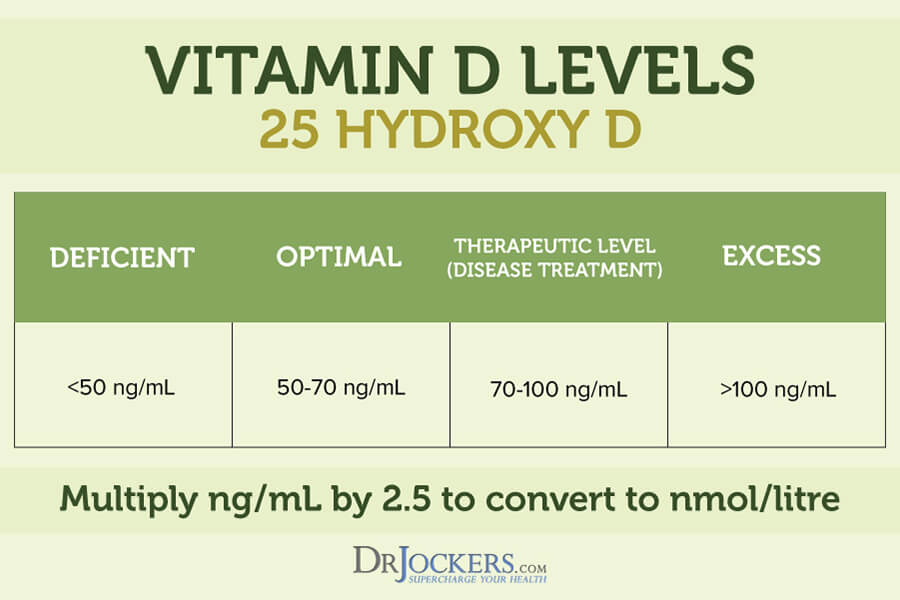
Support Gut Health
Your brain and gut are closely connected and supporting your gut is important for preventing and reducing brain degeneration. Make sure gut-friendly, anti-inflammatory, and nutrient-dense diet abundant in veggies, healthy fats, clean protein and probiotic-rich foods, such as sauerkraut, kimchi, and kefir.
Additionally, I recommend taking a daily probiotic supplement. Probiotics helps to optimize your gut health and improve your nutrient absorption while reducing gut related inflammation. When gut inflammation goes down it also reduces inflammatory mediators in the brain.
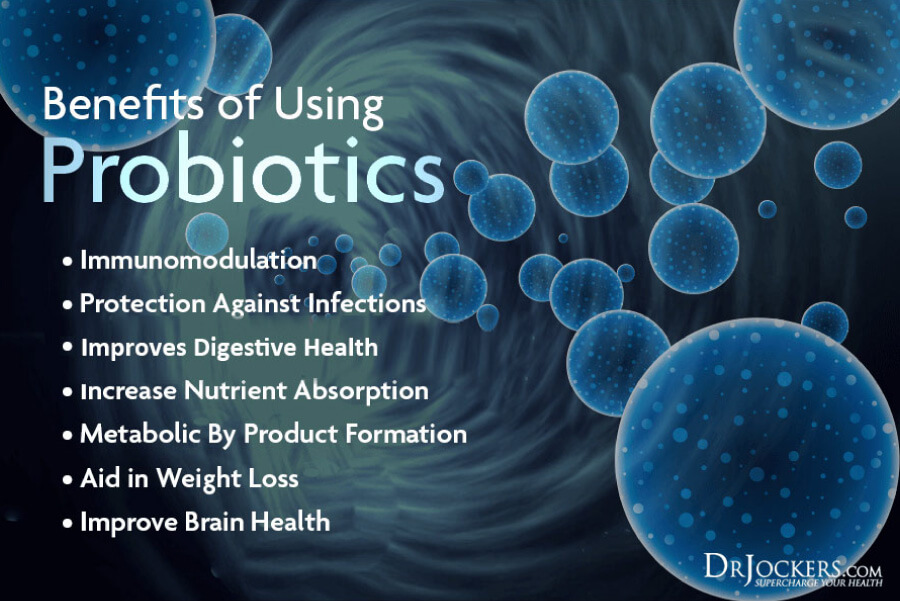
Low Intensity Movement:
A sedentary lifestyle reduces cerebrospinal fluid flow and can lead to increased oxidative stress in the brain. Movement and exercise are critical for brain health and can play an important role in the prevention and treatment of brain degeneration. Regular movement may help to reduce chronic inflammation, decrease stress levels, and lower the risk of memory problems, learning troubles, and cognitive decline.
Aim to exercise at least 20 to 30 minutes minimally 5 times a week combining cardiovascular exercise, strength and resistance training, and low-impact exercise. Make a commitment to stay active throughout the day. Take a walk during lunch, stretch regularly, play with your kids or pets, dance for your favorite song, take the stairs, and find other creative ways to sneak in movement into your day.
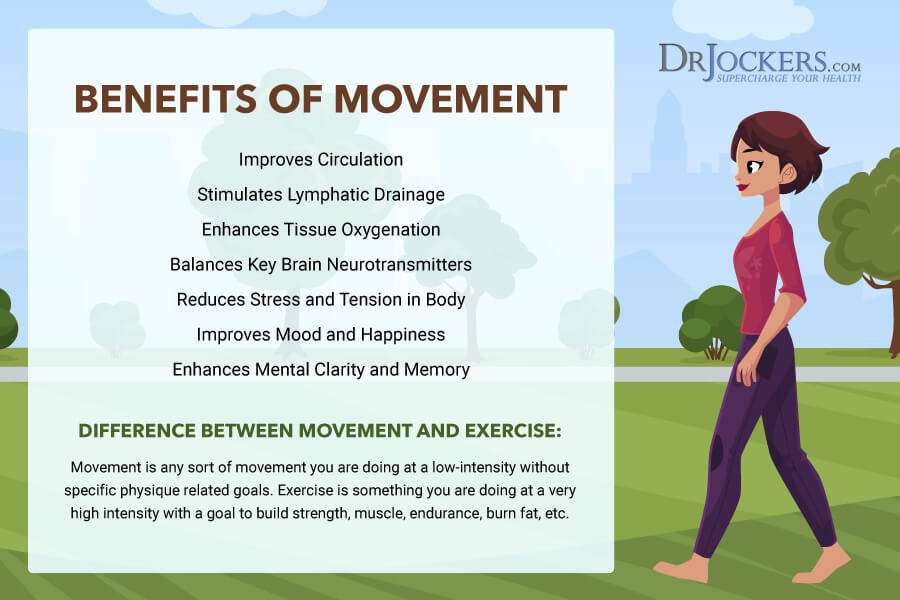
Final Thoughts
Parkinson’s is a serious issue that affects millions of people around the world. The symptoms of Parkinson’s include tremors, slow moving, memory problems, confusion, and mood changes. To protect your brain from brain degeneration, follow my tips and natural strategies.
You may notice improvements not only in your cognition, mental sharpness, mood, and energy but also in your overall health. If you want to work with a functional health coach, I recommend this article with tips on how to find a great coach. We offer long-distance functional health coaching programs. For further support with your health goals, just reach out and our fantastic coaches are here to support your journey.
Inflammation Crushing Ebundle
The Inflammation Crushing Ebundle is designed to help you improve your brain, liver, immune system and discover the healing strategies, foods and recipes to burn fat, reduce inflammation and Thrive in Life!
As a doctor of natural medicine, I have spent the past 20 years studying the best healing strategies and worked with hundreds of coaching clients, helping them overcome chronic health conditions and optimize their overall health.
In our Inflammation Crushing Ebundle, I have put together my very best strategies to reduce inflammation and optimize your healing potential. Take a look at what you will get inside these valuable guides below!
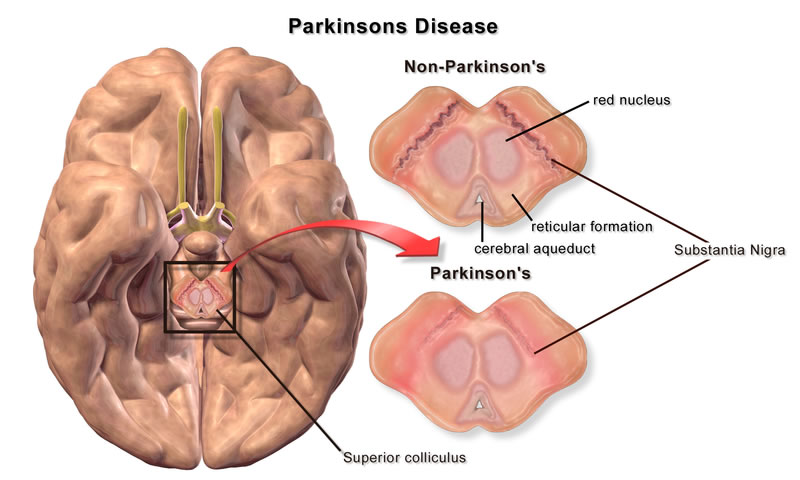


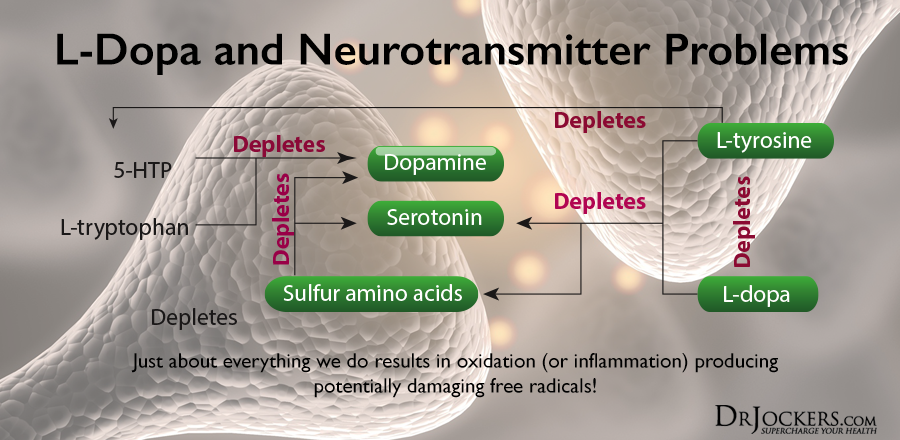




Thanks 4 the info.can U send me some more.
Parkinson disease has been ongoing in my family for long..I lost both parents to Parkinson and it is so much pain have not been able to get over. As we all know medically,there is no solution or cure for Parkinson disease and the cost for Medication is very expensive..Someone introduced me to a herbal Clinic(Native Medical Practitioner)in S.A.. i have spent thousands of dollars on medication..I said i will like to try them cos someone introduced me to them..they asked me sorts of questions and i answered back correctly..To cut the story short,they gave me some medicinal herbs and instructed me on how to apply theml..At first i was skeptical but i just gave it a try..I was on this herbal Medication for 4 weeks and i used the herbs according to the prescription..i decided to visit my doctor for another test..Honestly speaking, i never believe all he was saying until after the test when my doctor mention the statement that am Parkinson disease negative and my doctor was shocked as well….If you are out there suffering from this deadly disease you can also contact them via email: Healthherbalclinic(AT)gmail(DOT)com or website on www(DOT)Healthherbalclinic(DOT)weebly(DOT)com
I am very sceptical about these herbal remedies. The herbal companies all say that they are 100% effective and are guaranteed to work to reverse Parkinson’s disease. How can they if there is no cure.
They aren’t 100% effective and are not a cure. However, they can be helpful as part of a full lifestyle program to help you.
It is very important to give a balanced and healthy diet to people living with Parkinson’s. In addition exercise is also very useful for Parkinson’s disease. Doing exercise 3 times per week is very important to improving quality of life with Parkinson’s and it will help to maintain your life.
I am 76 and for three years I use for PARKINSON D. Neupro 8 mg and Madopar 1/4 x3 times. I DO gymnastic at home, I wald for half an ouhr per day…I feel easy fatigue what else I have to wait? Yhanks for the response.
Follow as many of the recommendations in this article as possible Sotiris!
What is the best procedure to follow for Parkinson’s dementia? Is anything working? My husband has severe and rapidly progressing PDD. Is it too late to start something?
So sorry to hear this! Follow everything in this article and I would recommend finding a functional health coach to assist. Here is a helpful article on how to do that: https://drjockers.com/functional-nutrition-tips-to-find-a-great-health-coach/
A nice young man I know has severe movement disorder due to PD and/or the meds he takes. He has lost a lot of weight due to chronic body movements and needs to stabilize his condition. Pls help!
Thanks!
R:-)
Thanks for reply!